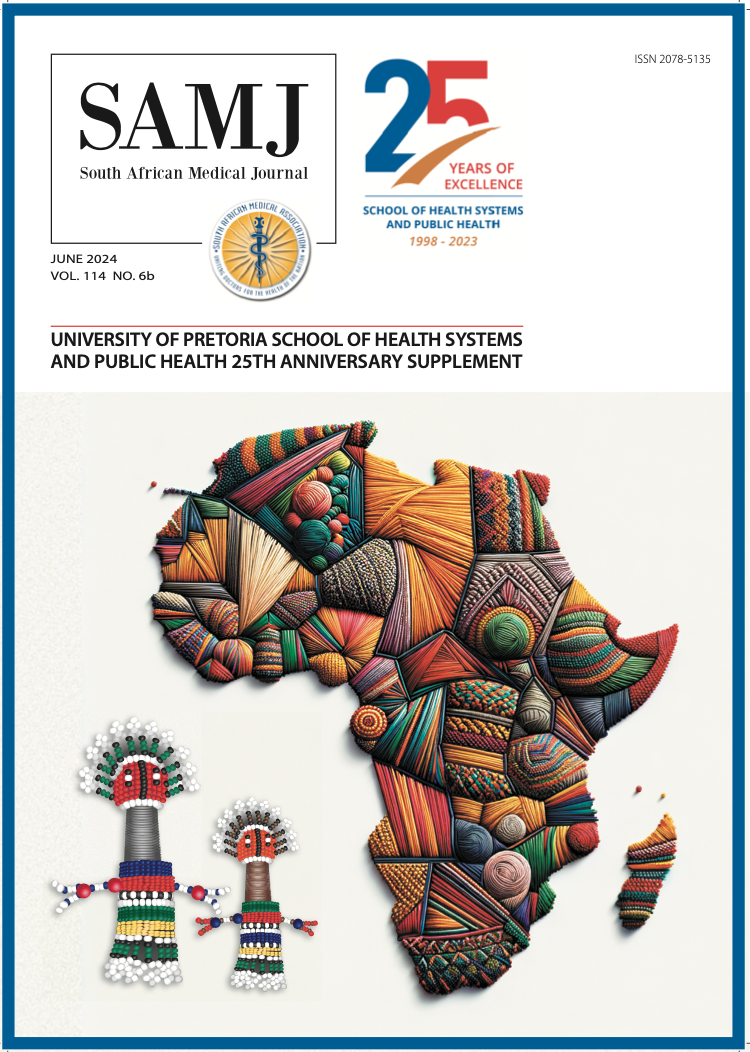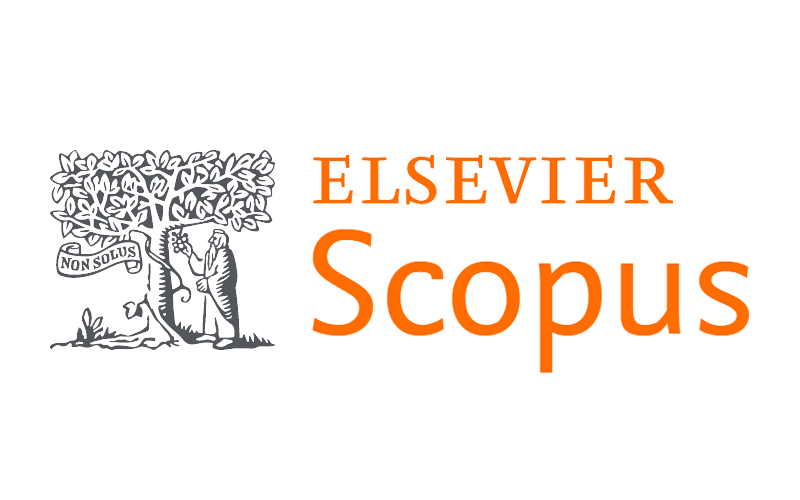Assessing awareness and treatment knowledge of preventable blindness in rural and urban South African communities
DOI:
https://doi.org/10.7196/SAMJ.2024.v114i16b.1309Keywords:
Blindness, rural, treatment, causes, preventionAbstract
Background. Preventable blindness is a global public health problem. In South Africa (SA) the prevalence of blindness is increasing, with a higher proportion of cataracts than the global norm, and a large rural population with limited access to specialised eye-care services.
Objective. To determine the level of knowledge regarding preventable blindness and treatment options within a rural and urban population. Setting. Rural and urban areas in the Eastern Cape, SA.
Methods. A descriptive cross-sectional study was conducted among 309 participants. Questionnaires were administered by fieldworkers at the different sites. Proportions were calculated and χ2 tests done to determine whether there was any significant relationship between the categorical variables. Data analysis was done using Stata version 15.
Results. Participants were almost equally distributed among the urban (49.2%) and rural areas (50.8%). Both groups had a similar composition of males and females. Most participants had completed high school. The results showed a statistically significant difference between the urban and rural participants’ knowledge about the causes of blindness: refractive error χ 2 (1, N=30) = 8.20, p<0.05, and cataract χ2 (1, N=28) = 8.64, p<0.05. The top two differences in the views between urban and rural participants regarding symptoms associated with eye problems (p<0.05) were: ‘people who need spectacles have double vision’, χ2 (1, N=122) = 28.19; and ‘people who need spectacles squint their eyes’, χ2 (1, N=124) = 17.37. The majority of urban participants reported opting to go to a private optometrist for eye health services, while the majority of rural participants would go to a pharmacy. Both groups were aware of the role of ageing in blindness.
Conclusion. Urban participants in this study appeared to be more knowledgeable than rural participants about the causes and symptoms of blindness and its treatment options. These findings should provide some value to those who provide primary healthcare services in rural areas as there is a clear opportunity for patient education and health promotion regarding the causes and symptoms of these common preventable causes of blindness. Addressing this knowledge gap regarding the causes and symptoms of blindness and the treatment options is a critical first step for awareness programmes in rural areas. Without this, there will be little demand for any treatment or service. Future studies are needed to understand which health promotion interventions are effective in preventable blindness in rural populations.
References
Palmer JJ, Chinanayi F, Gilbert A, et al. Mapping human resources for eye health in 21 countries of sub-Saharan Africa: Current progress towards vision 2020. Hum Resour Health 2014;12:44. https:// doi.org/10.1186/1478-4491-12-44
Sithole HL. A situational analysis of ocular health promotion in the South African primary health-care system. Clin Exp Optom 2017;100(2):167-173. https://doi.org/10.1111/cxo.12452
Sacharowitz HS. Visual impairment in South Africa: Achievements and challenges. Afr Vis Eye Health 2005;64(4):a239. https://doi.org/10.4102/aveh.v64i4.239
Sommer A, Taylor HR, Ravilla TD, et al. Challenges of ophthalmic care in the developing world. JAMA Ophthalmol 2014;132(5):640-644. https:// doi.org/10.1001/jamaophthalmol.2014.84
Gilbert C, Foster A. Childhood blindness in the context of Vision 2020 – the right to sight. Bull World Health Organ 2001;79(3):227-232.
Bozzani FM, Griffiths UK, Blanchet K, Schmidt E. Health systems analysis of eye care services in Zambia: Evaluating progress towards Vision 2020 goals. BMC Health Serv Res 2014;14:94.
Statistics SA. Census 2011. https://www.statssa.gov.za/publications/P03014/P030142011.pdf (accessed 1 July 2020).
Naidoo K, Sweeney D, Jaggernath J, Holden B. A population-based study of visual impairment in the Lower Tugela Health District in KZN, SA. Afr Vis Eye Health 2013;72(3):110. https://doi.org/10.4102/ aveh.v72i3.284
Naidoo KS, Chinanayi FS, Ramson P, Mashige KP. Rapid assessment of refractive error in the Ethekwini municipality of KwaZulu-Natal, Durban, South Africa. Clin Exp Optom 2016;99(4):360- 365. https://doi.org/1111/cxo.12377
National Department of Health. National guideline: Prevention of blindness in South Africa. DoH, 2002 (updated). https//www.westerncape.gov.za/text/2003/blindness.pdf (accessed 6 April 2019).
World Health Organization. Key facts. 2019. https://www.who.int/news-room/fact-sheets/detail/
onchocerciasis (accessed 20 June 2019).
Faber FWM. Nutritional status of South Africans: Links to agriculture and water. 2008. http://www.
health.uct.ac.za/sites/default/files/image_tool/images/91/Wenhold%20and%20Faber%202008%20
Nutritional%20Status%20of%20South%20Africans%20WRC.pdf (accessed 20 June 2019).
NationalDepartmentofHealth.NationalvitaminAsupplementationpolicyguidelinesforSouthAfrica. 2012. http://www.adsa.org.za/Portals/14/Documents/DOH/Vit%20A%20policy%20guidelines%20
OF%20S%20A%20-%20recent_1.pdf (accessed 20 May 2019).
Resnikoff S, Felch W, Gauthier TM, Spivey B. The number of ophthalmologists in practice and training
worldwide: A growing gap despite more than 200,000 practitioners. Br J Ophthalmol 2012; 96(6):783-
https://doi.org/10.1136/bjophthalmol-2011-301378
International Council of Ophthalmology. Number of ophthalmologists in practice and training
worldwide. U.S.A. http//www.icoph.org/ophthalmologists-worldwide.html (accessed 7 April 2019). 16. Health Professions Council of South Africa. Statistics. Pretoria: HPCSA, 2018 [updated 2019]. http//
www.hpcsa.co.za/publications/statistics (accessed 6 April 2019).
Maake ME, Moodley VR. An evaluation of the public sector optometric service provided within
the health districts in KwaZulu-Natal, South Africa. Afr Vis Eye Health 2018;77(1):1-9. https://doi.
org/10.4102/aveh.v77i1.407
Lecuona K, Cook C. South Africa’s cataract surgery rates: Why are we not meeting our targets? S Afr Med J 2011;101(8):510-512.
Ehrlich R, Joubert G. Epidemiology: A Research Manual for South Africa. Cape Town: Oxford University Press, 2014.
Xulu-Kasaba Z, Mashige K, Naidoo K. Knowledge, attitudes and practices of eye health among public sector eye health workers in South Africa. Int J Environ Res Public Health 2021; 18(23):12513. https:// doi.org/10.3390/ijerph182312513
Addo EK, Akuffo KO, Sewpaul R, et al. Prevalence and associated factors of vision loss in the South African National Health And Nutrition Examination Survey (SANHANES-1). BMC Ophthalmol 2021;21(1):1. https://doi.org/10.1186/s12886-020-01714-4
Lupón M, Cardona G, Armayones M. Public knowledge of low vision and blindness, and readability of on- topic online information. J Optometry 2021;14(3):240-246. https://doi.org/10.1016/j.optom.2020.06.005 23. Akuffo KO, Sewpaul R, Dukhi N, et al. Eye care utilisation pattern in South Africa: Results from
SANHANES-1. BMC Health Serv Res 2020;20(1):756. htpps://doi.org/10.1186/s12913-020-05621-8 24. Xulu-Kasaba ZN, Mashige KP, Naidoo KS. An assessment of human resource distribution for public eye health services in KwaZulu-Natal, South Africa. Afr Vis Eye Health 2021;80(1):8. https://doi.
org/10.4102/aveh.v80i1.583
OcanseyS,KyeiS,GyeduBN,AwuahA.Eyecareseekingbehaviour:AstudyofthepeopleofCapeCoast metropolis of Ghana. J Behav Health 2014;3(2):101-106. https://doi.org/10.5455/jbh.20140219014308 26. Misra V, Vashist P, Singh SS, et al. Awareness and eye health-seeking practices for cataract among
urban slum population of Delhi: The North India Eye Disease Awareness Study. Indian J Ophthalmol
;65(12):1483-1488. https://doi.org/10.4103/ijo.IJO_585_16
ShayanfarJ,GhasemiH,EsmailiSS,AlijanihaF,DavatiA.Usefulmedicinalplantsforvisionimpairment
in traditional Iranian medicine. Galen Med J 2019;8:e1285. https://doi.org/10.31661/gmj.v8i0.1285
Lau JTF, Lee V, Fan D, Lau M, Michon J. Attitudes towards and perceptions of visual loss and its causes among Hong Kong Chinese adults. Clin Experiment Ophthalmol 2004;32(3):243-250. https://
doi.org/10.1111/j.1442-9071.2004.00811.x
Downloads
Published
Issue
Section
License
Copyright (c) 2024 Z Kiva, J E Wolvaardt

This work is licensed under a Creative Commons Attribution-NonCommercial 4.0 International License.
Licensing Information
The SAMJ is published under an Attribution-Non Commercial International Creative Commons Attribution (CC-BY-NC 4.0) License. Under this license, authors agree to make articles available to users, without permission or fees, for any lawful, non-commercial purpose. Users may read, copy, or re-use published content as long as the author and original place of publication are properly cited.
Exceptions to this license model is allowed for UKRI and research funded by organisations requiring that research be published open-access without embargo, under a CC-BY licence. As per the journals archiving policy, authors are permitted to self-archive the author-accepted manuscript (AAM) in a repository.
Publishing Rights
Authors grant the Publisher the exclusive right to publish, display, reproduce and/or distribute the Work in print and electronic format and in any medium known or hereafter developed, including for commercial use. The Author also agrees that the Publisher may retain in print or electronic format more than one copy of the Work for the purpose of preservation, security and back-up.





